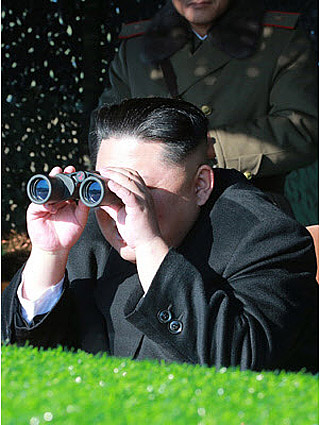Future of our Pyongyang policy

Conversations with those helping presidential hopefuls naturally move onto the North Korea policy of the next administration. Their prime focus is how to handle the nuclear tension and inter-Korean relations.
For the past nine years, the Lee Myung-bak and Park Geun-hye administrations have prioritized nuclear issues over inter-Korean ties, offering economic assistance if North Korea gives up its nuclear program first. As a result, North Korea’s nuclear technology became more advanced, and inter-Korean relations regressed to the pre-2000 level. All potential presidential candidates contend that it should be reversed. They say in chorus that unrealistic policies such as “denuclearization-opening-3000” or “Korean Peninsula trust process” also should be scrapped.
The difference is whether to simultaneously address the nuclear issue and inter-Korean relations or to improve inter-Korean relations first. A simultaneous resolution would be keeping up with the international community through the six-party talks while making May 24 sanctions more flexible. The latter would be approaching the nuclear issue through improved inter-Korean relations. Priority tasks would be the resumption of Kaesong Industrial Complex operation and Mt. Kumgang tourism. Construction of a Kaesong-Pyongyang highway and expanded Mt. Kumgang tourism are also considered as election promises.
What is regrettable is that these policies would only work in the post-Kim Jong-il era. As the May 24 measures broke off exchanges between South and North Korea, understanding of the Kim Jong-un era is poor, and the policies seem to remain in the past.
The North Korean economy has become a more market- and individual-oriented one, and the nuclear program has become more advanced. If the Kim Jong-il era was a linear equation, the Kim Jong-un era is a cubic equation. North Korea is no longer its past self, and the United States and China have changed as well.
Another crucial variable is the Trump administration in the U.S. The new administration has both dovish and hawkish officials, and their Asia policy could bring a new crisis or opportunity. We can be hopeful that Donald Trump and Rex Tillerson are negotiators. Tillerson worked for 41 years at ExxonMobil and even travelled across remote places to negotiate with rebel leaders. Trump nominated him as the Secretary of State because of his tenacious negotiation skills. We need to watch how Tillerson would negotiate with Kim Jong-un.
The North Korea policy of the next administration should be a new paradigm deviating from the Kim Jong-un era. It is time to plan more pragmatic and feasible policies rather than focusing on the nuclear threat. We need to look further and draw a bigger picture to improve inter-Korean relations to the China-Taiwan level.
JoongAng Ilbo, Dec. 27, Page 34
*The author is a researcher at the Unification Research Institute of the JoongAng Ilbo.
KO SOO-SUK










with the Korea JoongAng Daily
To write comments, please log in to one of the accounts.
Standards Board Policy (0/250자)